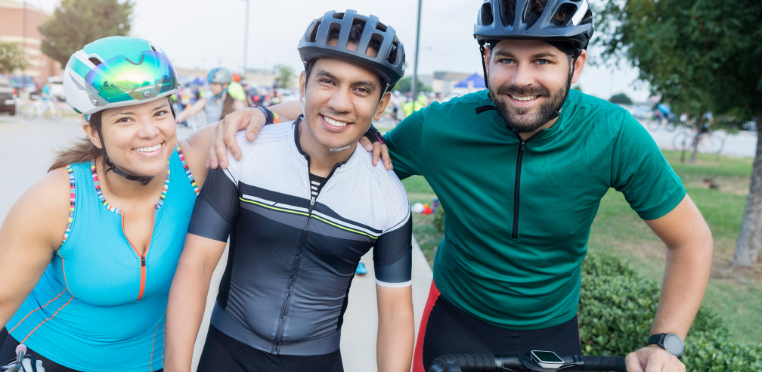How to Launch a Successful Participant Referral Program for Your Race

Nowadays, we all know that races are more than just a dash to the finish line; they’re about community, shared experiences, and the thrill of the race journey. If you’re organizing a race and want to boost participation, a well-executed participant referral program could be the key to continued and sustainable growth.
In this guide, we’ll break down the steps to create and implement a successful referral program that not only engages your existing participants but also draws in new eager racers.
Why is a Referral Program Important?
Before diving into the steps, let’s understand the significance of a referral program. Referral programs tap into the power of word-of-mouth marketing, leveraging the trust and influence of your current participants. In general, 92% of consumers trust referrals from friends and family over other forms of advertising. This means a well-managed referral program can make a huge difference in your participant numbers and your bottom line.
Now, let’s get into the practical steps to launch your very own participant referral program.
1. Understand your most dedicated participants
To start, identify your most dedicated participants – the ones that come back year after year – and analyze their demographics and interests. This insight will help you tailor your referral incentives to match their preferences, ensuring a more effective program. For example, are your most dedicated participants elite runners or hobby trainers? If they are elite athletes, you may want to focus your incentives on a certain type of speed gear or the like.
2. Set clear goals for your referral program
Define the objectives of your referral program. Whether it’s increasing registrations, boosting engagement, or both, having clear, measurable goals will guide your efforts. Establish a timeframe for testing the program and how long it should take for you to achieve these goals, giving your program a sense of urgency and focus. Examples of goals could be to increase participation by a certain percentage from referrals or to get a certain amount of referrals per month.
3. Research Competitor programs
Explore existing participant referral programs from other races. Analyze successful elements and shortcomings of competitors’ programs to gain valuable insights. Use this information to refine and improve your referral initiative – for example, you can get ideas on which incentives to give and how to promote your program.
4. Choose Attractive Incentives
An incentive makes a referral program more efficient – it means that you offer your racers a gift or discount in exchange for the person they refer (since it will generate a sale for you, you will benefit). Offer rewards that resonate with your community. Examples of incentives:
- A discount for another race you organize
- A discount to sign up for next year’s race
- Exclusive race merchandise only available for these referrers
- Race-related perks, such as premium meals, free transportation or accommodation discounts
The key is to make the incentives appealing enough to motivate both referrers and new participants to get involved. It is most common to give the incentive to the person referring, but you can also give one (usually a smaller version) to the person signing up.
5. Create a streamlined registration and incentive redemption process
Simplify the registration process for referrers and their recruits. There are various purpose-built referral tools out there you can use to facilitate the process. Sometimes, your registration platform may offer a referral feature that you can use. You can also organize yourself with coupon codes. For example, you create a unique coupon code for every person who wants to refer people, and then you can see how many people used the code and determine how many participants each referrer recruited and distribute their incentives accordingly. Provide clear instructions to both referrers and recruited participants.
A key part of this is also to ensure you have an uber-smooth registration process so that you don’t lose any eager racers du to technical issues when trying to sign up.
6. Promote your referral program
Utilize various marketing channels to spread the word about your program. Leverage social media, email campaigns, and your race website to create visually appealing promotional materials. The more exposure your referral program gets, the more likely participants will take notice.
Encourage interaction among participants through social media. Create a sense of community and camaraderie among referrers. Highlight success stories and testimonials to inspire others to join the race.
A good idea, at least for the start of your referral program, is to only invite your most dedicated participants to ensure they are willing and eager to take action for you. Later on, you can add information in your registration confirmation email for example.
7. Monitor and adjust your referral program
Implement tracking tools to monitor the success of your referral program. Regularly assess data on registrations and participant engagement. Be prepared to adjust the program based on feedback and performance metrics to ensure ongoing success. Perhaps you need a stronger incentive or a more efficient way of recruiting members!
We hope this guide has inspired you to start your own participant referral program. Remember – the best is to just get started with something simple, and then iterate and fine-tune along the way until you have reached your goals. Good luck!
PS. If you need general tips on race marketing and communication, check this post.


